The Eiffel Tower has become both a global cultural icon of France and one of the most recognizable structures in the world. This iron lattice tower, located along the Champ de Mars, was named after the French engineer Alexandre Gustave Eiffel, whose company designed and built the tower in 1889. Erected as the entrance arch to the 1889 World’s Fair (which celebrates the 100th anniversary of the French Revolution), it was started on January 26, 1887, completed on March 15, 1889 and opened on March 31.
It was initially criticized by some of France’s leading artists and intellectuals for its design (saying it had too much engineering and not enough art to be considered good architecture) but now is widely considered now to be a striking piece of structural art, often featured in films and literature. Here are also some interesting trivia regarding the Eiffel Tower:
- Gustave Eiffel did not design the Eiffel Tower – senior engineer Maurice Koechlin did.
- The design for the tower was decided by a contest. Contestants had to submit their designs for consideration. Eiffel’s design won.
- It took 3 years of lobbying to approve the Eiffel Tower in 1887.
- Public funds only covered a quarter o the cost of the Eiffel Tower.
- On February 14, 1887, all the big names of the world of arts and literature, including Charles Garnier (who built the famed Opera house), Guy de Maupassant, Alexandre Dumas Jr., Leconte de Lisle, and Sully Prudhomme, united to stop its construction in what is known as the ‘Artists Protests.”
- Eiffel’s firm produced 5,329 drawings (1,700 generals an 3,629 detailed) of the Eiffel Tower
- Only one person died in the construction of the Eiffel Tower
- The French name for the Eiffel Tower is La Tour Eiffel. It also has the nickname La dame de fer which means “the iron lady,” the same nickname as Margaret Thatcher’s.
- Famed novelist Guy de Maupassant hated the tower but ate lunch there every day. When he was asked why, Maupassant answered that the only place in Paris where he couldn’t see the Eiffel Tower was the Eiffel Tower itself.
- It is the most-visited paid monument in the world.
- The tower, the tallest structure in Paris and the second tallest structure in France (not including broadcast aerials), after the Millau Viaduct (completed in 2004, the world’s tallest bridge is taller, at 343 m.). It was the tallest until the construction of a military transmitter in the town of Saissac in 1973.
- During its construction, the Eiffel Tower surpassed the 555-ft. high Washington Monument to assume the title of the tallest man-made structure in the world, a title it held for 41 years, until the Chrysler Building in New York City was built in 1930. In 1957, after the addition of the aerial, the Eiffel Tower it is now taller than the Chrysler Building by 5.2 m. (17 ft.).
- Famous visitors to the tower during its opening included The Prince of Wales, Sarah Bernhardt, “Buffalo Bill” Cody (his Wild West show was an attraction at the Exposition) and Thomas Edison.
- Eiffel had a private apartment for entertaining friends at the third floor of the tower. He made use of his apartment at the top level of the tower to carry out meteorological observations, and also made use of the tower to perform experiments on the action of air resistance on falling bodies.
- Gustave Eiffel was also behind the design of the Garabit Viaduct (1884), the Pest Railway Station in Hungary, the dome of the Nice Observatory and the interior elements for the Statue of Liberty‘s spine. He was also involved in a disastrous attempt by the French to build a canal in Panama, and his reputation was badly damaged by the failure of the venture. He died while listening to Beethoven‘s 5th symphony.
- The Eiffel Tower was originally intended for Barcelona, Spain, but the project was rejected.
- It served as a military radio post in 1903, transmitted the first public radio program in 1925, and then broadcast television and digital TV.
- Sir John Bickerstaffe, Mayor of Blackpool and an attendee at the 1889 World’s Fair, was so impressed with the Eiffel Tower that, in 1891, he had a similar structure (Blackpool Tower) designed and built on the English seafront to surpass the Eiffel Tower in height. However, it was unsteady, never completed and demolished in 1907.
- Eiffel’s permit for the tower allowed it to stand for only 20 years (it was to be dismantled in 1909, when its ownership would revert to the City of Paris). As part of the original contest rules for designing a tower was that it should be easy to demolish, the city had planned to tear it down. However, the tower was proved valuable for communication purposes (it was repurposed as a giant radio antenna) so it was allowed to remain even after the expiry of the permit.
- In 1905, local newspaper L’Equipe organized a stair climbing championship at the tower. A M. Forestier won a bike, taking three minutes and 12 seconds to reach the second level.
- On February 4, 1912, French tailor Franz Reichelt attempted to fly from the first floor with a spring-loaded parachute suit of his own design. However, he crashed 187 ft. to the ground instead.
- During World War I, using the Eiffel Tower’s wireless station to intercept enemy messages from Berlin, the French military, in 1917, intercepted a coded message between Germany and Spain that included information about ‘Operative H-21’ otherwise known as the Dutch-born exotic dancer Margaretha Geertruida Zelle MacLeod (stage name: Mata Hari) who was spying for the Germans. Based on this message, the French were able to arrest, convict and execute Mata Hari for espionage.
- At the First Battle of the Marne, in 1914, the tower played a part in the Allied victory when one of its transmitters jammed German radio communications, hindering their advance.
- By 1918, after Guillaume Apollinaire made a nationalist poem in the shape of the tower (a calligram) to express his feelings about the war against Germany, it became a symbol for Paris and for France
- In 1923, Pierre Labric cycled down the stairs of the tower, winning a bet but was arrested by local police.
- On February 28, 1926, 23 year old French aviator Leon Collot attempted to fly his plane under the tower but was killed when he was blinded by the sun and became entangled in the aerial from the wireless station, crashing in a ball of flame.
- On 2 separate occasions in 1925, con artist Victor Lustig, pretending that he was the deputy director-general of the Ministry of Posts and Telegraphs, “sold” the Eiffel Tower to a scrap metal dealer.
- Between 1925 and 1934, French car manufacturer Citroen used the tower as a giant billboard (recorded as the world’s biggest advertisement by the Guinness Book of Records), the company name was emblazoned on the tower using a quarter of a million light bulbs.
- During the German Occupation in World War II, when Adolf Hitler visited Paris, the French cut the lift cables on the Eiffel Tower so that he would have to climb the steps if he wanted to reach the top. Nazi soldiers also attempted to attach a swastika to the top, but it was so large it blew away and had to be replaced with a smaller one.
- In 1944, as the Allies approached Paris, Hitler ordered Gen. Dietrich von Choltitz, the military governor of Paris, to demolish the tower, along with other parts of the city. The general refused.
- In 1960, Charles de Gaulle proposed temporarily dismantling the tower and sending it to Montreal for Expo 67. The plan was rejected.
- In the Beatles song I Am the Walrus, Semolina Pilchard climbs the Eiffel Tower.
- For its 75th anniversary, there was a televised broadcast of mountaineers climbing up the tower.
- The tower appears in the 1985 Bond film A View to a Kill. There is a scene in the Jules Verne Restaurant, and a fight in the stairway.
- In 2007, a woman with an objects fetish named Erika La Tour Eiffel “married” the Eiffel Tower, changing her name to Erika La Tour Eiffel in honor of her “partner.”
- According to the Societe de la Tour Eiffel, since the tower first opened in 1889, there have only been 349 successful suicides. Some were jumpers, while others were people hanging themselves from the beam. Those who did attempt to jump from the first level don’t always die.
- At night, it is illegal (you can be fined) to take a photograph of the tower because the light display is considered artwork and therefore protected under copyright law.
- Zoning restrictions in Paris limit the height of most buildings to 7 storeys high. Thus, only a small number of taller buildings have a clear view of the tower.
- The Eiffel Tower being so popular, its design has been recreated around the world, with over 30 replicas including the half scale replica at the Paris Las Vegas Hotel in Nevada, USA, the full scale Tokyo Tower in Japan and one at the Window of the World theme park in Shenzhen, China.
- To counteract atmospheric perspective, multiple types of colors are used to paint the Eiffel Tower. Darker shades are used at the top and, gradually, lighter hues are painted toward the bottom.
- The names of 72 engineers, scientists and mathematicians are engraved on the side of the tower, each of whom contributed to its construction.
- To mark the 125th anniversary of the Eiffel Tower’s completion, the British Virgin Islands has launched a special tower-shaped $10 coin.
- In the computer game Call of Duty: Modern Warfare 3, the tower is toppled by an airstrike.
- Lego set number 10181, containing 3,428 bricks, are for those who wanted to build your own Eiffel Tower.
- To keep the operations up and running 365 days a year, the site requires a large staff of 280 people.
- To validate admission, cashiers sell 2 tons of tickets every year and the cleaning crew uses 25,000 garbage bags annually.
- More than just a tourist attraction, the tower also houses gourmet restaurants, art exhibitions, concerts, a newspaper office, a post office, scientific laboratories, and the first level becomes an ice rink every year.
- In 1984, two Britons parachuted from the tower without permission.
- The Eiffel Tower Light Display, dating back to 1985, was invented by Pierre Bideau, an electrician and lighting engineer. Consisting of projectors equipped with high-pressure, yellow-orange sodium lamps, when illuminated, they give the impression that the Eiffel Tower is sparkling with gold. In under 10 mins., the projectors are turned on and activated by sensors. In 2004, they were replaced with energy-efficient projectors, resulting in 40% energy savings.
- For the landmark’s centennial, tightrope walker Philippe Petit walked the 2,296 ft. between the Palais de Chaillot and the Eiffel Tower.
- In 2002, Hugues Richard climbed the tower on his mountain bike , breaking his own 1998 record.
Here are some amazing facts about the tower:
- The Eiffel Tower is 324 m. (1,063 ft. including antenna) tall (about the same height as an 81-storey building) and its base is square, 125 m. (410 ft.) on a side.
- 98 million people ascended it in 2011 and the tower received its 250 millionth visitor in 2010. In 2012, there were 6,180,000 visitors (75% foreign) and an average of 25,000 people ascend the tower every day. The majority of visitors are French (10.4%), followed by Italy and Spain (8.1% each), USA (7.9%), Britain (7.4%), Germany (5.8%) and Brazil (5.5%).
- The tower has three levels for visitors, with restaurants (including the internationally renowned Jules Verne Restaurant) on the first and second. The third level observatory’s upper platform, the highest accessible to the public in the European Union, is 276 m. (906 ft.) above the ground,
- 1,665 steps are needed to climb all the way to the top of the Eiffel Tower. The climb from ground level to the first level (187 ft.) is over 300 steps, as is the walk from the first to the second level. The height of the third level is 905 ft.
- There are 336 floodlights and 20,000 (5,000 per side) special light bulbs that twinkle (for 5 mins. on the hour, every hour, from nightfall to 1 AM) on the Eiffel Tower. Its light beam can be seen 50 miles away. 25 mountain climbers were required for the 5-month lighting installation. 50 miles of electrical cable and 60 tons of metallic parts cover the tower. Total cost was over $5 million
- Its 6 elevators make 100 climbs per day. Every year, elevator trips total 103,000 kms. (64,000 mi.), enough to go around the globe 2.5 times.
- Annually, it consumes 7,500,000 KWH of electricity, the same amount of electricity used by a small village annually.
- Every 7 years, around 50 to 60 tons (49 to 59 long tons; 55 to 66 short tons)of paint, weighing as much as 10 elephants, are needed to paint the 2,690,750 sq. ft. surface of the Eiffel Tower to protect it from rust.
- It cost 7,799,401 gold francs to build. If the Eiffel Tower was built today, it would cost about US$35 million.
- It took a total of 2 years, 2 months and 5 days to build 180 years fewer than Paris’s other great attraction, Notre Dame Cathedral.
- Despite its height, the Eiffel Tower was designed to be wind resistant, swaying only a few inches in the wind.
- Depending on the ambient temperature, the top of the tower may shift away from the sun by up to 18 cm. (7.1 in.) because of thermal expansion of the metal on the side facing the sun.
- The Eiffel Tower weighs 11,133 tons, around 7,300 of which represents the metallic structure..
- The height of the Eiffel Tower varies by 15 cm. (5.9 in.) due to temperature.
- 300 workers, 18,038 pieces of wrought iron and 2.5 million rivets were needed to build the Eiffel Tower.
- The puddled iron (wrought iron) structure of the Eiffel Tower weighs 7,300 tons, while the entire structure, including non-metal components, is approximately 10,000 tons. If the 7,300 tons of the metal structure were melted down it would fill the 125-m. square base to a depth of only 6.25 cm. (2.5 in.), assuming the density of the metal to be 7.8 tons per cu. m.
- A cubic box surrounding the tower (324 m. x 125 m. x ) would contain 6,200 tons of air, almost as much as the iron itself.
Eiffel Tower: Champ de Mars, 5 Avenue Anatole France, 75007 Paris, France. Tel: +33 892 70 12 39. Tickets can be purchased to ascend by stairs or lift (elevator) to the first and second levels. To avoid long queues, tickets can also be purchased online. Although there are stairs to the third and highest level, these are usually closed to the public and it is generally only accessible by lift (€15).

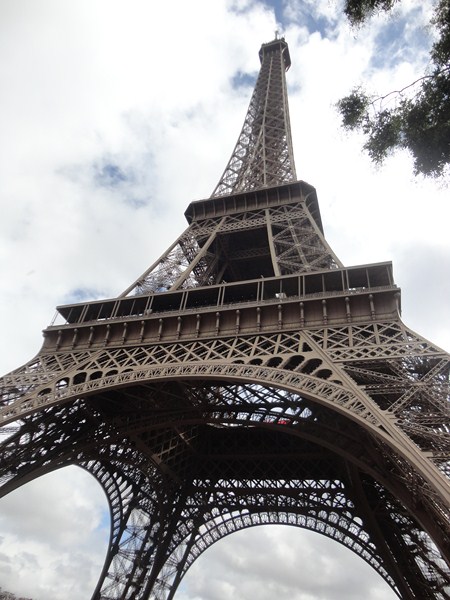
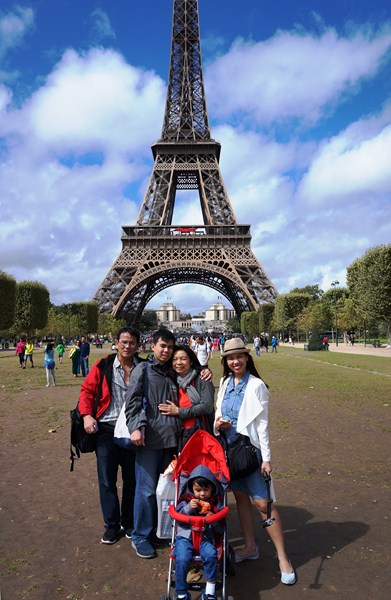
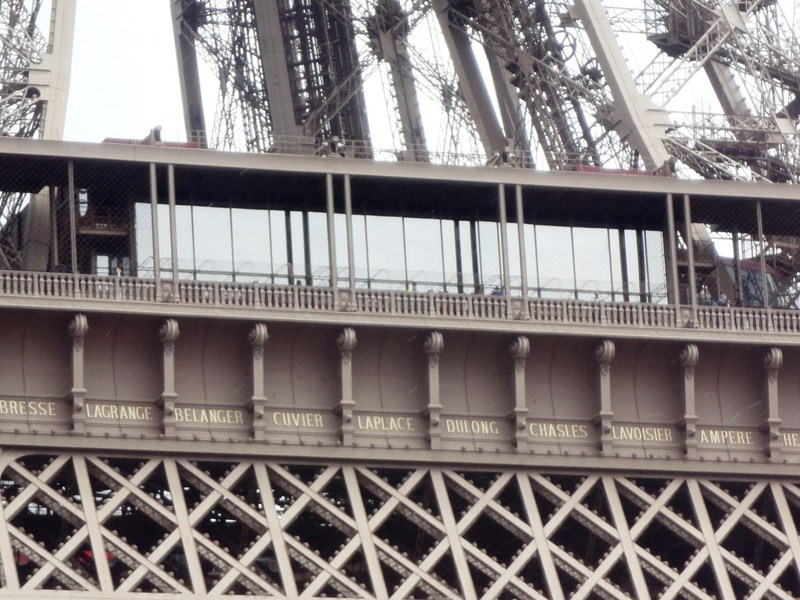
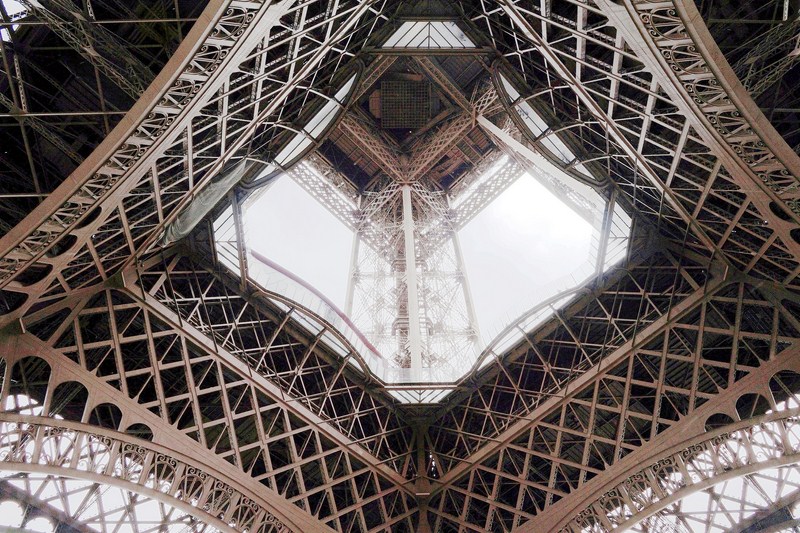
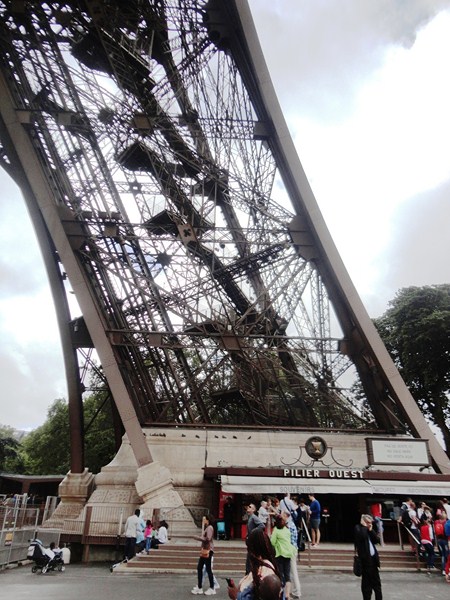
Pingback: Statue of Liberty (New York City, U.S.A.) – B.L.A.S.T. – Live Life to the Fullest ……… Don't Stay Put